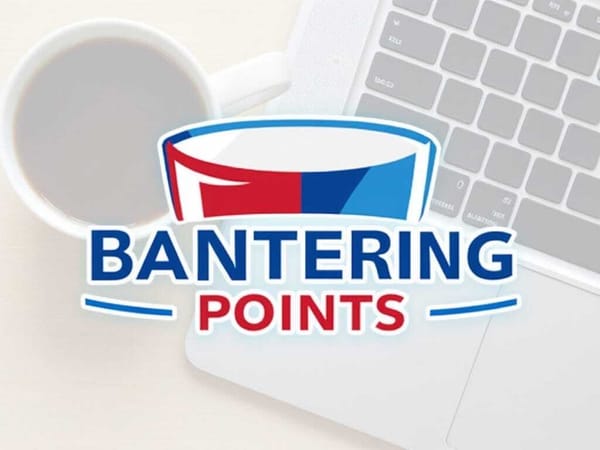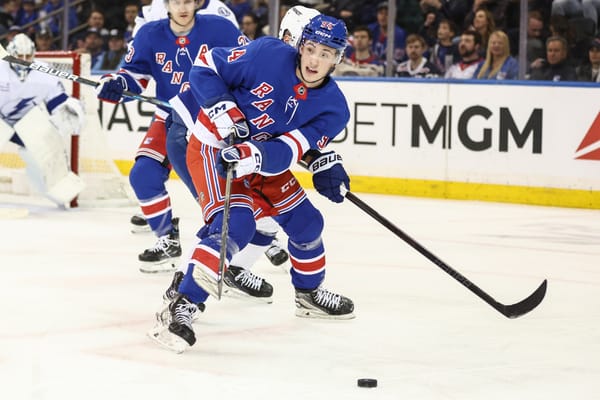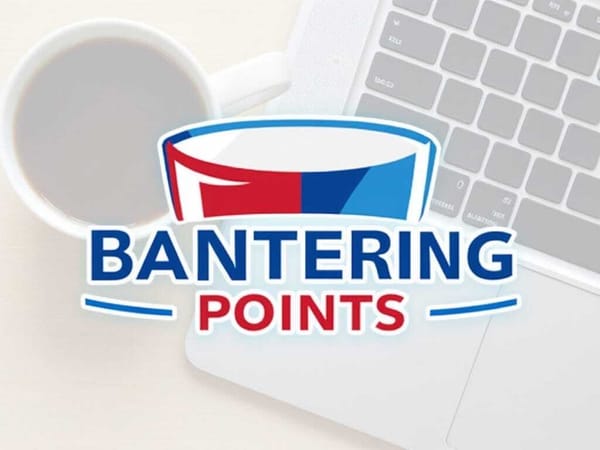Blueshirt Banter 2020 New York Rangers Prospect Rankings: 15-11
Two 2020 draft picks feature in this edition of the prospect rankings.
15. Will Cuylle, Left Wing, Windsor Spitfires (OHL)
2019 Ranking: N/A
Age: 19
Acquired Via: 2020 Draft (Second Round)
I wrote an extensive scouting report for Cuylle following the Rangers’ drafting of him back in October. Since he hasn’t suited up for so much as a scrimmage in the last two months there’s not too much new to say.
The short version of his scouting report is this: He has a very good shot which he can get off quickly and with velocity either off the rush or following the reception of a pass. He’s a big body who will find his way to loose pucks around the net and who can hold possession around the perimeter.
He has his share of problems. He’s an opportunist more than a creator. He lacks creativity on the puck. He’ll complete routine passes but not much more. He’s not going to beat defenders 1v1 or be the catalyst of a defensive breakdown. He’s a hard worker but doesn’t necessarily have the situational awareness to be a meaningful defensive presence, at least yet.
In many ways, he’s reminiscent of former Rangers prospects Lias Andersson and Ryan Gropp. If the puck is on Cuylle’s stick in a scoring position, there’s a good chance he’s going to convert. But he’s going to need his linemates to do the bulk of the work to make those chances happen.
A lot of his scoring comes with the man advantage, when play defaults in the offensive zone and there is plenty of space for him to set up at the right faceoff circle and receive passes. Power play specialists have limited use at the NHL level.
I spoke to an NHL scout who thought the Rangers drafted Cuylle too early. That being said, he gave what I would call a guarded endorsement of Cuylle’s NHL chances.
“He’ll make it because he has a pro work ethic. What his ceiling is is up to him... He’s not a high IQ guy but if you give him a role he can execute,” the scout said.
I’m personally not going to go so far as to guarantee Cuylle makes it to the NHL, and I don’t think the scout was necessarily doing that, either. The essence of the thought is that Cuylle has enough physical tools to get to pro hockey and his attitude will earn him the benefit of the doubt with coaches. For better or worse, “good intentions” has earned Brett Howden a lot of leash with Head Coach David Quinn. Cuylle, too, could possibly get a few cracks at sticking in the NHL, and I won’t be stunned if he carves out an NHL role. I personally only see bottom-six upside in the form of a passenger who adds some secondary scoring.
I am not infallible, and although a fair number of people (NHL scouts included) more or less agree with my take, there is also equally a number who are big believers in Cuylle; the Rangers among them, clearly. I strongly disagree with the Rangers’ evaluation, but I do at least want to note that this was not some bizarre off-the-board selection.
14. Tyler Wall, Goaltender, Hartford Wolf Pack
2019 Ranking: N/A
Age: 22
Acquired Via: 2016 Draft (Sixth Round)
Wall finished his senior season at UMass Lowell and signed with the Rangers in May. I didn’t know what “team” to list him on so for now I’m slotting him with Hartford, though please understand that he hasn’t actually played at the pro level yet and may very well end up in the ECHL whenever his season begins. The pandemic has created all sorts of problems, big and small, when putting this list together.
The 2019-20 season was a crucial one for Wall. Wall’s first three seasons at UMass-Lowell were generally positive but came with inconsistencies. A standout his freshman season, Wall completely lost his confidence the next season and lost his starting job. He came back stronger and regained his starting gig as a junior, though with some stinkers mixed in. Senior year, with a contract on the line, was make-or-break.
Wall unequivocally earned that NHL contract. He posted a .931 save percentage in 32 games despite UMass-Lowell’s defense giving him heavy workloads on most nights. He was a finalist for the Mike Richter Award, given to the NCAA’s best goaltender.
When Wall is confident and focused, he’s a very good goaltender. He moves well in the crease and does a tremendous job of keeping his edges through the release. Sometimes he overshoots his spots in movements, but he does not panic, making calm adjustments rather than overcompensating with desperation flails, as young goaltenders often do.
Wall will have to work on his game in the minor leagues for I imagine multiple seasons, but he’s pretty polished for an NCAA goaltender. He has NHL upside and, if the Rangers are fortunate, could be ready for a job once one of Shesterkin or, more likely, Georgiev, moves on.
13. Evan Vierling, Center, Barrie Colts (OHL)
2019 Ranking: N/A
Age: 18
Acquired Via: 2020 Draft (Fifth Round)
I wrote an analysis of Vierling following the Rangers’ drafting of him in October. Given that he hasn’t suited up in a single game since, with the Ontario Hockey League still in limbo, there isn’t really anything new to say at the moment. Here is part of what I wrote about Vierling after the draft.
Vierling doesn’t necessarily have any standout traits but is rather a well-rounded offensive contributor. I am not comparing the specific skillsets here and in NO WAY am I insinuating anything about stature as a prospect, but thematically there’s a similarity to Derek Stepan in that his output is greater than the sum of his parts. He’s a playmaker but with enough shooting ability to make him credible in scoring situations. He’s comfortable holding the puck and driving with it through the neutral zone. He’s a committed and intelligent defensive center.
There are a few reasons he fell. First, he had a bit of a turbulent season. Starting the season with the Flint Firebirds, his play was just okay before he left the team and requested a trade. After missing two months, he was traded to Barrie. But once there, he got hot. He was a great complement to Flyers’ first-round pick Tyson Foerster, producing 12 goals and 22 assists in 28 games.
Possibly related to his absence, I’m told that Vierling went through some personal issues this season. I’m not aware of the specifics but was repeatedly assured that this is not a case where he’s been accused of reprehensible behavior or his moral character has been called into question.
“He wasn’t an asshole,” the scout said.
I’m ranking Vierling ahead of prospects who perhaps offer more certainty because of his upside. If we were to rank the Rangers’ prospect pool by upside alone, Vierling would comfortably fit in the top-eight, at worst. A lack of any standout physical tools does hamper him, but he’s intelligent and well-rounded enough on the ice that it’s possible for him to become a real impact middle-six center if all goes well.
12. Lauri Pajuniemi, Right Wing, TPS Turku (Liiga)
2019 Ranking: 28
Age: 21
Acquired Via: 2018 Draft (Fifth Round)
Following a mediocre-at-best post-draft season in 2018-19, Pajuniemi got a bump up the depth chart, in part because Kaapo Kakko headed to New York. He responded by lighting Liiga on fire. His 26 goals led Turku by a wide margin (former Ranger Lauri Korpikoski was second on the team with 17). In fact, by goals-per-game, he ranked second in all of Liiga. In particular, he out-scored top Oilers prospect Jesse Puljujarvi by two goals despite playing seven fewer games. To boot, he registered 14 assists.
Goals all count the same, but Pajuniemi is a particularly electric offensive player. He has no fear and makes plays with confidence, shooting frequently with the belief that every shot of his can and should go in. Our friend Alex Nunn put together a lengthy compilation of Pajuniemi’s goals from last season.
He’s a trigger man on the power play, but even at even strength is quite good at finding open space and getting shots off quickly.
I wrote about my serious concerns about Will Cuylle’s ability to contribute when he’s not physically holding the puck in a shooting position. With Pajuniemi, the flag color is yellow rather than red. I do think he was overreliant on those one-timer types of plays last season, but he has shown some capabilities in carrying the puck, taking on defenders, and making plays east-to-west to unsettle the defense. He has enough vision and poise to pass up a shooting opportunity and make passes across the slot or from behind the net. And while Liiga isn’t the top European league, he’s performing against grown, competent hockey players.
Pajuniemi started this season slowly but has since rediscovered his form from last season, scoring four goals and adding an assist in his last six games for Turku. Unfortunately, his hot streak has been cut off by a month-long postponement of the Liiga season due to COVID concerns.
The Rangers own Pajuniemi’s rights until 2022, but unless he seriously struggles over the remainder of the season I would expect the Rangers to sign him and bring him over to North America for the 2021-22 season. From there, it’s about sufficiently diversifying his game. His bread-and-butter is going to be as a shoot-first winger who menaces teams in the offensive zone. The physical and defensive aspects of his game are always going to be a weakness. The question is if he can save face in those areas well enough to make his offensive gifts worthwhile. If he can make those adjustments, then he could have a future in the NHL as a third-line winger who plays the power play.
11. Dylan Garand, Goaltender, Kamloops Blazers (WHL)
2019 Ranking: N/A
Age: 18
Acquired Via: 2020 Draft (Fourth Round)
Contrary to what might be the intuition of some, the Rangers absolutely did need another goaltender in the prospect pool. When a team drafts an 18-year-old, they’re typically looking at a potential NHL career that starts 4-6 years down the line. The current crop of notable young Rangers goaltenders in the system will be in their late-20s and perhaps not part of the organization at that point. The Rangers will need new rising talent in net.
Garand has a chance to be that guy. He’s a brave and athletic goaltender who is difficult to beat low and who has strong reflexes. Better yet, he’s not over-reliant on that athleticism, at least for his age. His movements, though strong, are composed and measured. He’s not overshooting in the crease and then flailing limbs in desperation save attempts. He tracks the puck well.
On talents alone, Garand should have gone earlier in the draft than he did. The concern teams likely had with him is his size. At 6’1, he’s below the height that a lot of teams are comfortable with. He also has a tendency to play small in the net, keeping his body compact and favoring the lower portions of the net when sealing the posts and moving across the crease. Better players at the pro level will pick him apart shooting at the top corners if he does not adjust. Making himself big, as former Ranger Antti Raanta does so well to use as one example, will be key. Luckily, the Rangers have just the goaltender coach in Benoit Allaire to help him fix those issues, as he did so successfully with numerous goaltenders of similar stature.
Garand posted a .921 save percentage for the Kamloops Blazers last season, and although they were a good defensive team, his backup posted a .880 save percentage in 25 games. Team-level save percentage rarely tells all or even most of the story, but it’s at least clear that this wasn’t a high tide raising all boats. Garand earned his saves largely on his own merit.
Garand is currently with Team Canada battling for a spot on their 2021 World Junior Championship roster. He’s a virtual lock to make the team in some capacity and I think is probably a soft favorite to start the tournament as the team’s number-one goaltender. That is largely because of a lack of options available to Canada, but Garand is no slouch.
Will he make the NHL? That’s a long way off and few goaltenders ever offer much certainty. The Rangers’ bread-and-butter for the last 15 years has been picking up multiple young goaltenders from the bargain bin and letting the cream rise to the top. In Garand, the Rangers picked up a viable option to be the next success story.




